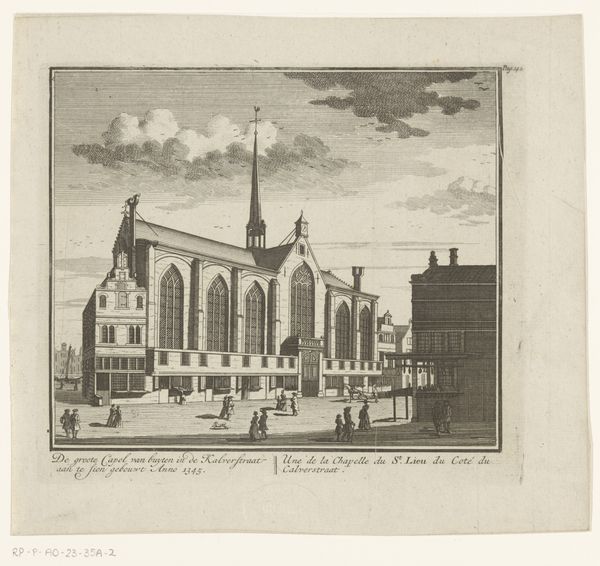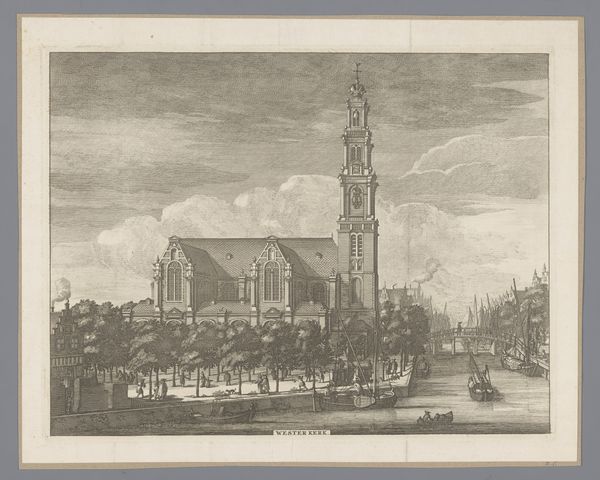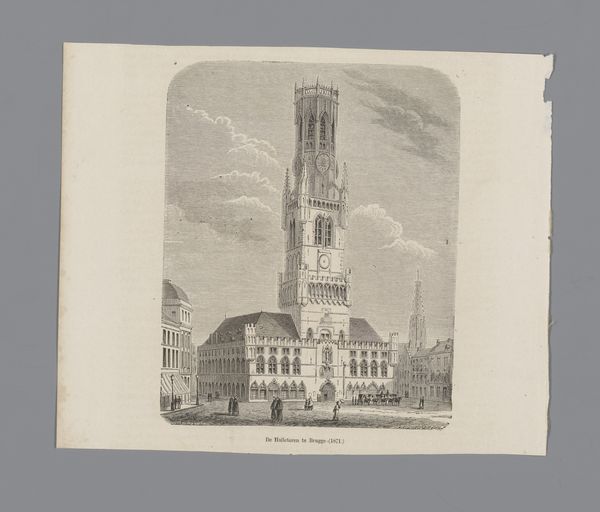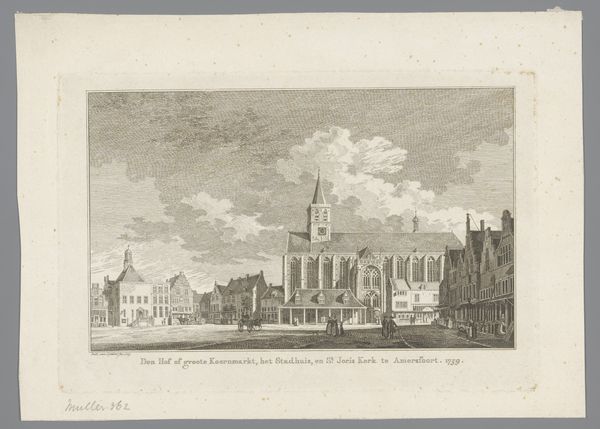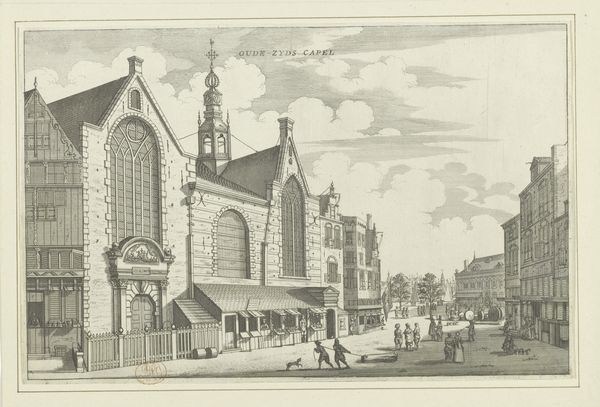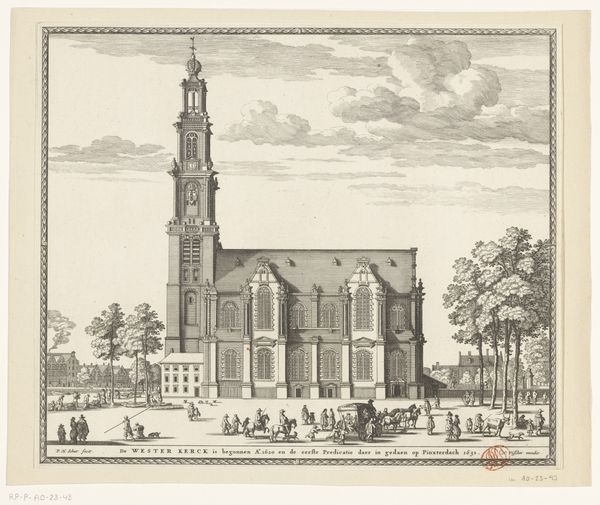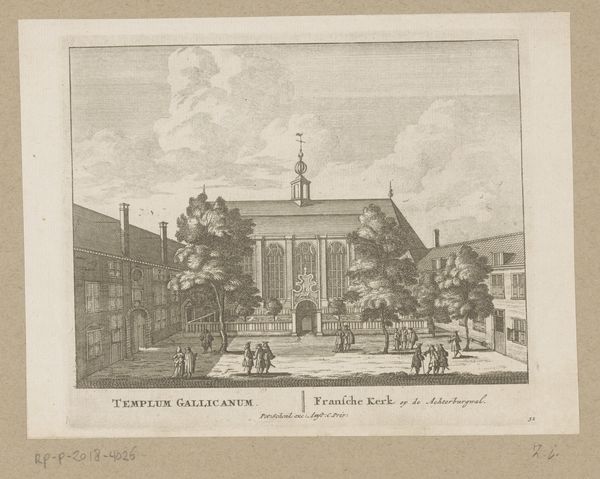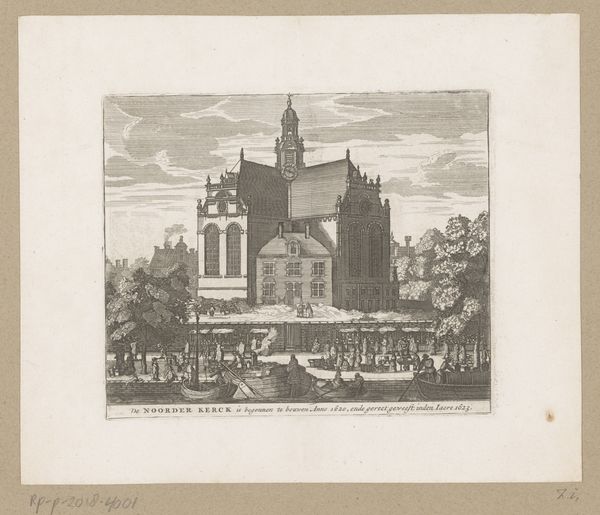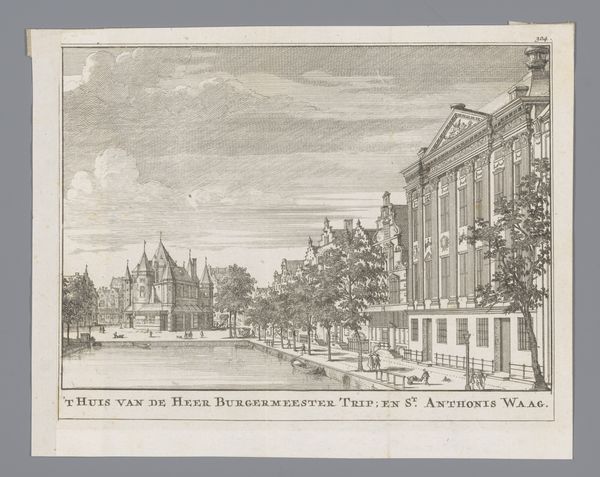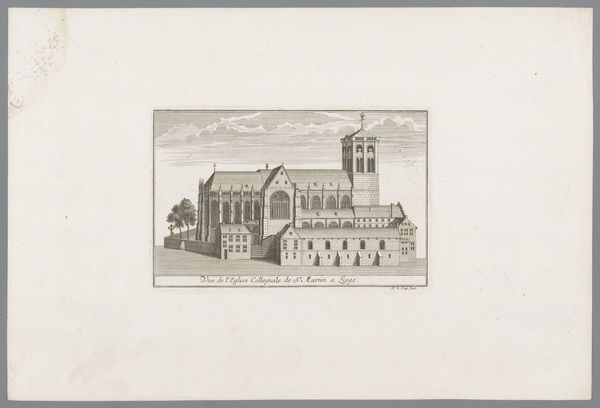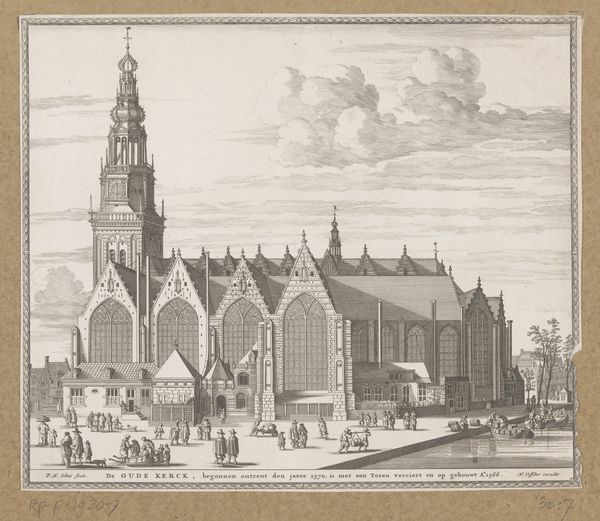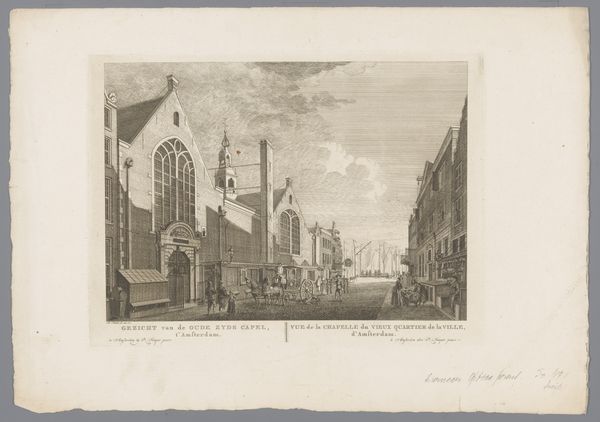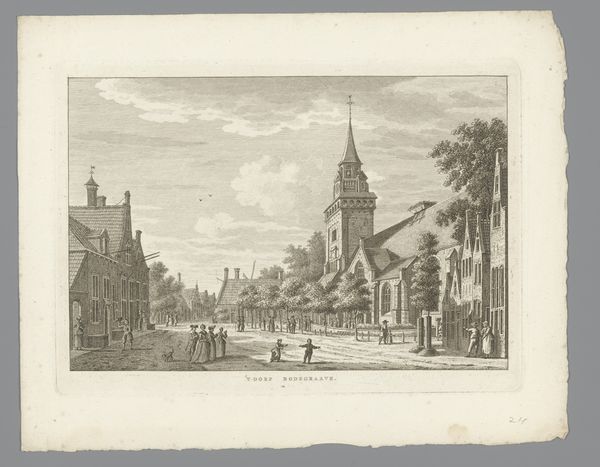
drawing, paper, engraving
#
drawing
#
baroque
#
landscape
#
paper
#
cityscape
#
engraving
Dimensions: height 149 mm, width 200 mm
Copyright: Rijks Museum: Open Domain
Curator: We're looking at an engraving titled "Gezicht op de Westerkerk te Amsterdam," or "View of the Westerkerk in Amsterdam," created in 1751. Editor: Immediately, I notice the print’s precise lines—it gives the building a stoic, almost imposing air. The stark contrast between the church and the paper creates a captivating, tangible texture. I want to examine the engraving more closely to study its detailed social architecture and materials. Curator: Given the period and subject matter, this engraving certainly speaks to the power structures inherent in 18th-century Amsterdam. Religious institutions, like the Westerkerk, wielded significant influence. The church isn’t just a building; it's a symbol of Dutch Reformed Protestantism. The cityscape itself invites analysis, raising questions about class divisions in urban planning. Editor: True, but focusing on its creation also emphasizes social dynamics. Think about the engraver's skill; engraving involves intense manual labor. The tools, the materials, the specific process – all these reflect an investment in labor and the social values being articulated at this time. Curator: Precisely! This isn't simply a rendering of architecture; it's a testament to the prevailing ideologies concerning social order, faith, and perhaps even early forms of Dutch nationalism, as visualized through an artistic, commercial, or propaganda context. Editor: And let's not ignore the distribution aspect. Engravings like these would have been relatively accessible, circulating images and, by extension, solidifying specific viewpoints of power to wide groups of people, expanding specific views on religion, social class, labor, and more, to viewers and stakeholders. Curator: I agree. By situating this piece within its historical moment, we reveal a fascinating narrative of social values, class power dynamics, and the church's power in civic life. The Westerkerk looms large in the print but, also, metaphorically, in the lives of Amsterdam’s residents. Editor: And that its legacy persists; these structures endure as both historical artifacts and sites of ongoing production of beliefs, materials, and social ties that echo even now. Curator: An inspiring example of the deep connection between art and the narrative of the city itself, with all its complexity. Editor: Definitely. Understanding not just what it represents, but how it came to be and how the materiality shapes the messaging adds a whole new dimension.
Comments
No comments
Be the first to comment and join the conversation on the ultimate creative platform.
